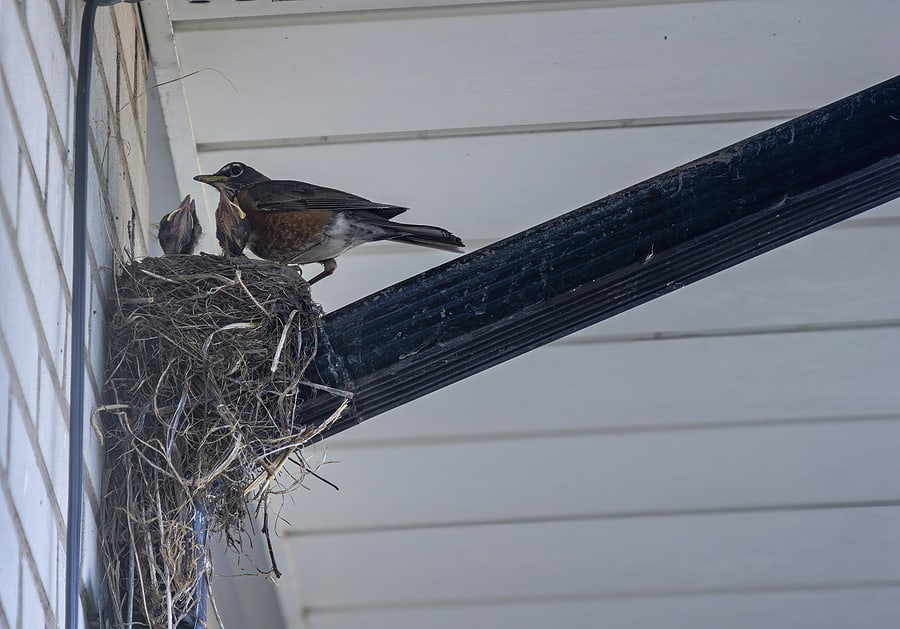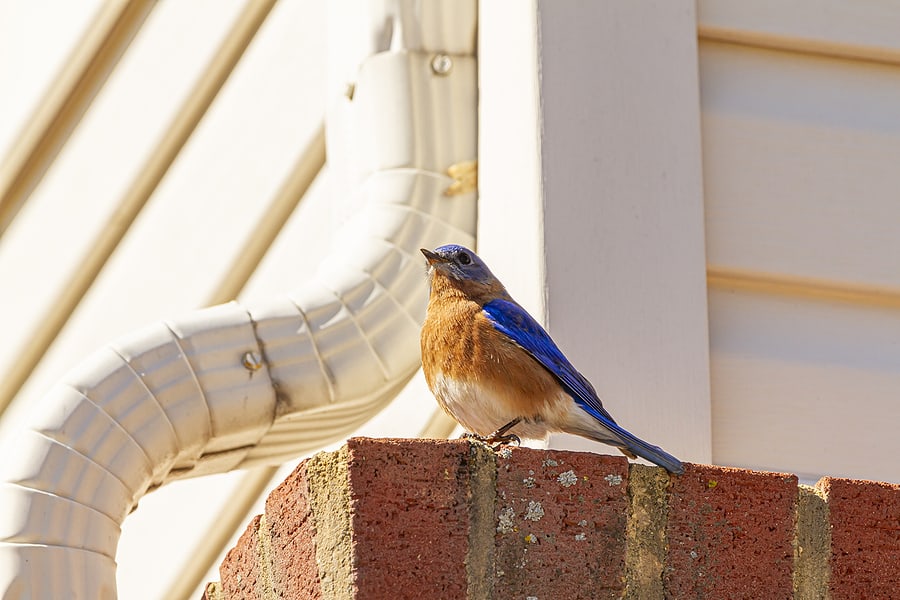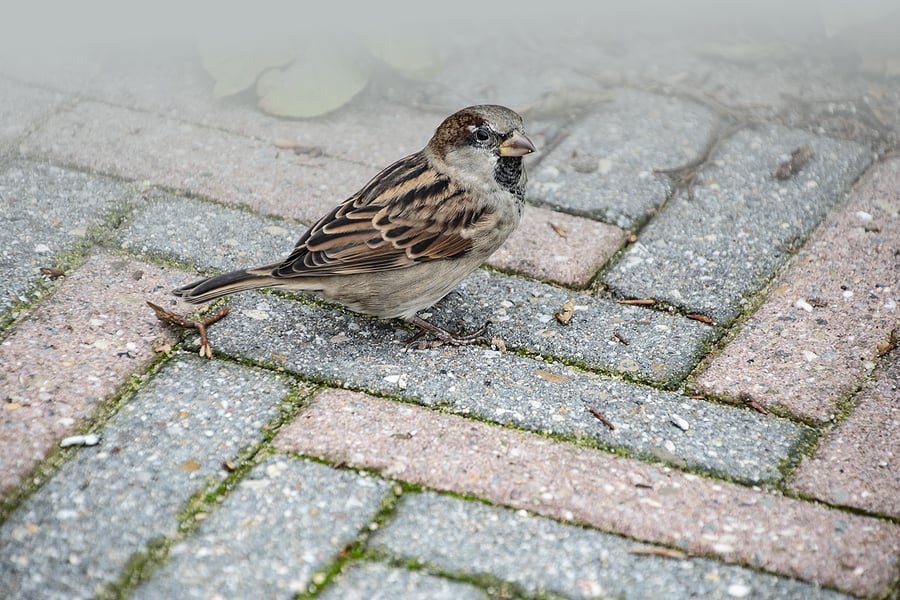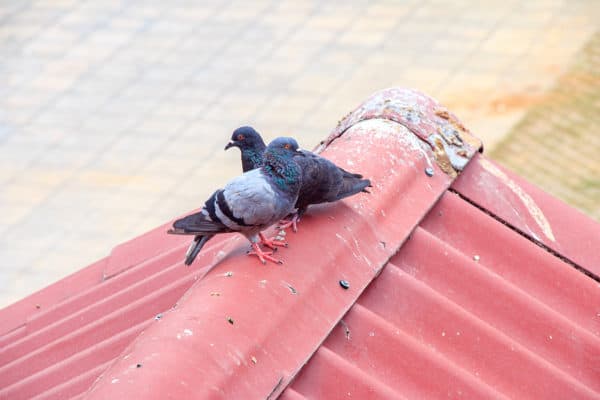READY TO GET STARTED?
REQUEST A FREE ESTIMATE
Fill out the form below or call (888) 466-7849 for a free, no-obligation estimate.

Birds can be charming creatures, often bringing a touch of nature to urban environments. However, when it comes to commercial properties, birds can become a significant nuisance and even a health hazard. From unsightly droppings to potential property damage and health risks, preventing birds from nesting or roosting around your business is essential. In this blog, we will explore the challenges birds pose to businesses, the importance of bird control, and effective strategies to keep your property bird-free.
Birds can cause numerous problems for commercial properties, including:
Implementing effective bird control measures is crucial for maintaining a safe, clean, and professional business environment. Here’s why bird control is important:
Birds can pose significant challenges to businesses, but with the right strategies, you can prevent them from becoming a nuisance. Contact your local pest management company near you today to schedule an inspection and protect your business from the challenges posed by birds.

Birds have been known to build their nests in the most inconvenient places around your home – above doors, over your garage, inside your shed, on top of your lawnmower, in heat pumps, and any number of other high traffic or hazardous areas. Although birds don’t typically pose a serious threat to humans, they can cause damage to your roof, car, and property. Their nests can block stove, dryer, and fan vents causing fire hazards and rendering them useless. Their nests can also clog gutters and drains, leading to standing water and potential damage to your roof. Their droppings contain uric acid which can damage the paint on your car. Bird droppings also contain pathogens that are dangerous to humans like histoplasmosis. Bird nests can also contain other pests such as mites, parasites, and ticks that can stick around long after the birds have left the nest.
Your first reaction when encountering a nuisance bird may be to just remove the nest. However, there are Federal laws regarding bird nest removal that make it illegal to remove certain species of birds or their nests. Best practice is always to check with a wildlife control company before attempting to remove any bird nests from your home.
Here are some steps to take to ensure both proper and safe bird nest removal and/or relocation.
The best way to eliminate bird nests from your property is to prevent them from building in the first place. Remove any food scraps and open trash from around your home as this invites them to feed. Make sure trash is secured tightly in containers. Place any bird feeders and birdbaths away from the home and further out in the yard. Only put out enough food for a few birds and clean up any spills regularly. Consider installing gutter guards to prevent nesting in gutters and downspouts. Vents are a common nesting place for birds so install vent covers and screens. Use perch repellents if necessary; these are rows of bird spikes installed on ledges, window sills, and around the perimeter of the roof to prevent birds from alighting on perches. You can also use visual repellents such as plastic owls, hawks, snakes, and even coyotes. If you use visual repellents, make sure to move them often as the birds will get used to them being in one place. Hang reflective bird diverters from strings on your porch also.
The best time to remove a nest is when it is still in the building stage. If you notice a bird nest already built or remove one this season, keep an eye out in the same area next season and stop it before it is fully completed.
Always make sure a nest is inactive before removing or relocating it. Never attempt to remove or relocate a nest if there are birds or eggs present. It is best to wait until after nesting season for any removal or relocation. Eggs in a nest without signs of the parents don’t necessarily mean the nest has been abandoned. The parents may be out feeding or they may have left to allow the eggs a chance to cool down.
The best time to remove or relocate a nest is after nesting season is over. Most birds only nest once per year; however, some species will nest 4 to 5 times. The time varies with the species of bird. Without knowing the specific species of bird, it is difficult to determine the best time to remove or relocate the nest. A professional wildlife exclusion expert can help identify the species you are dealing with and help determine the best time to remove the nest.
Once you have positively identified the species of bird you have, confirmed it is legal to remove the nest, and have made sure the nest is inactive and no eggs are present, you can proceed with removing or relocating the nest. Bird nests can harbor other pests and residual bird droppings that can contain dangerous pathogens for humans. Make sure to wear long sleeves, long pants, latex gloves, and a respiratory mask to protect yourself. Carefully inspect the nest to make sure it is empty of eggs and birds. Spray the nest with an antibacterial spray. Once dry, remove the nest and dispose of it in a securely sealed container or exterior trash bag. Dispose of it in the trash away from the home. Clean the area where the nest was with a strong disinfectant. Remove and dispose of your gloves. Remove your clothing and wash them immediately in hot water. Wash your hands thoroughly.
It can be difficult to determine whether or not the bird nest in or on your home is legal to remove or the best way to remove it. If you have a bird nest that is causing problems in or on your property, contact a professional wildlife exclusion company who can positively identify the species of bird you have, properly remove or dispose of the nest, and help you identify areas where nesting could be a potential issue in the future.
Can You Have Rats and Mice at the Same Time?
Wildlife Creatures to Lookout for this Winter

As the weather starts to warm up, you may see an increase in bird activity around your home. Birds will often leave a mess on your patio or deck and can even be found taking a dip in your swimming pool. Nuisance birds will build nests in the most inconvenient places putting you and your family in harm’s way. Here are a few tips on how to prevent birds from taking over your outdoor fun this summer.
There are several things you can try to keep birds away from your pool and deck. One of the easiest is to install a decoy bird near your pool. Owl statues are the most common but hawks and falcons will also work well. These statues make other nuisance birds think a predator has already claimed that territory and they will take up residence somewhere else. Remember to move the statue occasionally, especially if birds get used to it or start ignoring it.
You can also use automatic pool vacuums in your swimming pool to help deter birds. Automatic vacuums are constantly moving which discourage birds from landing in the water. Leaving brightly colored toys and floats in the pool can also help keep these pesky birds away. Keep your pool covered if possible. You can even use a simple solar cover instead of a traditional cover to help protect your pool from droppings and feathers.
Birds will often nest in your grill or in the eaves around your patio. To protect your grill in between uses, invest in a high quality cover and use it any time the grill is not in use. If that’s not an option, cover your grill with bird netting when it’s not in use. Clean the grill after use and make sure there is no food residue left over. Birds will keep coming back if they continue to find food in the area.
If you’re finding birds flocking to your deck or patio area, try installing bird spikes on fences or in gutters. It is difficult for birds to land on them, making it undesirable for birds to nest. You can also try wind chimes or ultrasonic noise machines which are also helpful and driving nuisance birds away. The noise machines give off a high-pitched sound that is undetectable to humans but will annoy any lingering birds.
Taking preventative measures against birds will help in your bird control efforts. Discourage people from feeding birds in and around your home. Clean up any spilled grain or birdseed from feeders daily. Block any openings in your home (lofts, vents, eaves, window sills, etc.). Change your ledge angles to 45 degrees or more to prevent birds from roosting on them. Screen the underside of rafters with netting or wire mesh screening.
While birds aren’t usually a dangerous problem, they can become quite a nuisance, especially when you are trying to enjoy time outdoors. If you have a problem with birds or any other pests, contact your local pest control company who can provide you with a thorough evaluation and treatment plan.
Does Hot Weather Bring Out Cockroaches?

Most of the time birds are fun to watch, singing their cheerful songs as they fly around our yards. Birds can also be productive by producing down feathers, helping control pests and weeds, and giving us plenty of opportunity for birdwatching. Some birds, however, are referred to as nuisance birds and can actually be detrimental to both our health and our homes by damaging buildings and monuments, contaminating our food sources, and transmitting serious diseases to humans.
Three of the most common nuisance birds are starlings, sparrows, and pigeons.
Starlings are found in both urban and rural areas. They travel in flocks that can have thousands of birds in them. They can often be found nesting in trees, vents, ledges, lampposts, and even signs. Starlings will eat seeds, fruit, food scraps, fruit, vegetables, and insects, making your home and yard a very abundant source of food for them. When starlings aggregate in large numbers, they can cause problems to homeowners due to the sheer volume of feces they generate and the cacophony of noise they produce. Their feces can deface and deteriorate buildings and structures and cause surfaces to become slippery. It can also contaminate livestock and kill trees. Their nests often clog machinery and drainage systems, leading to moisture buildup and the risk of fire. They are also known to transmit diseases like histoplasmosis.
Sparrows can be found in urban and rural areas, as well. They are known to build extremely messy nests using any materials they can find, including string, twigs, paper, and grass. They usually nest in areas that are covered and elevated, such as warehouses, stadiums, and airport hangers. They usually eat grain but will also eat fruit, seeds, food scraps, and even insects when necessary. Sparrows are able to reproduce extremely fast, making them difficult to control. They are an aggressive species and will often drive off other species of birds. Sparrow nests can cause fires and electrical shortages. They can also cause contamination and are associated with over 25 different diseases and parasites.
Pigeons are arguably the most common of the nuisance birds and are also responsible for some of the worst public health issues caused by birds. They usually nest in small, flat, elevated spaces like air conditioners, window sills and ledges, and pipes. They eat anything from grain to food scraps and even manure. Pigeon feces can deface buildings and other structures and cause slipping hazards on surfaces like sidewalks, stairs, and fire escapes. Their feces can also clog gutters and downspouts. Pigeons are also known to carry diseases like histoplasmosis. Pigeons are easily adaptable to their environments, making them difficult to control.
Any nuisance bird population can be difficult to control once they have established themselves in your area. Prevention is key to helping control these populations. Check out these bird prevention tips you can use to help deter these problem pests from your home and yard.
If you have a problem with nuisance birds, contact your local pest control company who specializes in bird control for a comprehensive evaluation and elimination plan.
How You Could Be Attracting Termites

Some birds are beautiful and fun to watch, while others can be downright annoying and destructive. While birds aren’t typically considered a nuisance pest, they can become a problem when their nests obstruct important areas in your house, their droppings carry transmittable diseases, or they get into your attic or chimney.
Understanding what nuisance birds are attracted to is the first step in helping to prevent them. Pest birds such as crows, pigeons, sparrows, robins, and starlings are attracted to food sources they can find around your home (insects, earthworms, corn, seeds, and rotten fruits and vegetables). Woodpeckers are also a common nuisance bird and will drill into your trees in search of carpenter ants, beetles, and other wood-boring insects.
Birds can be attracted to pet food which is often left outside all day for them to feast on. Birds also require water to survive and will use your fountain, water feature, or any other standing water on your property as a birdbath.
While professional bird control is always an option, there are some bird prevention tips you can use at home to help keep birds away. Here are 5 of our favourite DIY bird-repellent methods.
If there isn’t anything in your yard to attract birds, they will be less likely to hang around.
Most birds require freshwater to survive. Substitute saltwater for freshwater in your fountains and water features so birds won’t be able to drink from them. If you feed your pets outdoors, remove or cover their food and water dishes as soon as they’re done with them. Make sure pet food is kept in airtight containers.
Birds also like to take cover in grass and other landscaping, especially in windy or stormy conditions.
Make sure grass is kept mowed, and hedges and trees are kept trimmed to help reduce cover. If you see a bird actively building a nest, use a long stick to dismantle it. Once you do this a few times, the bird will move on to a new nesting site.
If the nest is already built or occupied by the bird, don’t attempt bird nest removal yourself. There are laws in each state regulating the removal of bird nests. Contact a professional wildlife exclusion company to help properly remove or relocate the bird’s nest in question.
One of the easiest and cheapest natural bird repellents is aluminum foil. There are several different ways you can use aluminum foil to keep birds away. If birds are disturbing your garden, you can place strips of aluminum foil under the surface of the dirt or around any plants they are bothering. Birds don’t like the feel of the foil under their beaks and will stay away.
You can also hang strips of aluminum foil (or shiny party streamers) from the trees or other high points around your home and garden. The sun reflects off the shiny surface and bothers their eyes, deterring them from coming near. If woodpeckers are around, hang an aluminum pie plate on the tree where you see them most often. The reflection of the plate will scare the woodpeckers off.
If birds are constantly landing in or near your pool, try running fishing wire high over the pool in a criss-cross pattern. You can hang it between 2 trees, between eaves, or from any other high locations you might have near your pool. The birds don’t like the impediment to their flying space and will find somewhere else to land. As a bonus – you won’t be able to see the clear fishing wire from the ground so it doesn’t take away from the aesthetics of your backyard space.
If pigeons and other nuisance birds are invading your patio space or window sills, try sprinkling baking soda anywhere they like to perch. Birds don’t like the feel of the baking soda under their toes and will avoid it at all costs. You can also use double-sided duct tape instead of baking soda.
If birds are a problem around your garden, pool, or deck, you can purchase one (or several) predator decoys at your local hardware store to scare them away. As the birds fly overhead, they will see the plastic owl, rubber snake, or whichever other decoy you choose and won’t land near it. Just make sure you move your decoys around often or the birds will get used to them and realize they aren’t real.
The more deterrents you have around your property, the less likely you are to have birds hanging around. If these methods don’t work or you already have an existing bird issue, contact a professional bird control company who can help you safely and effectively remove the nuisance birds and put measures in place to prevent them from coming back in the future.
How to Avoid a Rat Invasion During a Pandemic